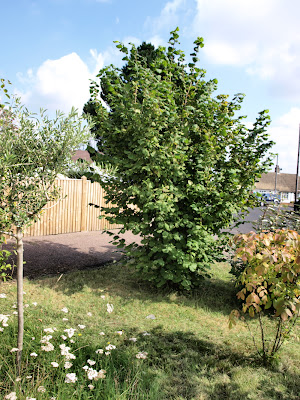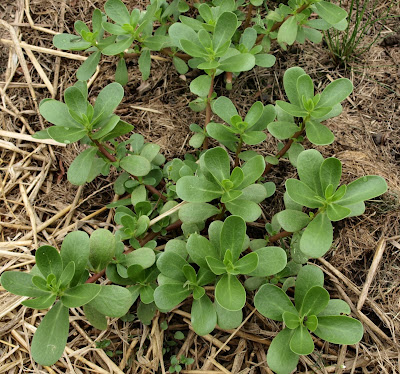Common Sorrel (Rumex acetosa) is a perennial plant from the Polygonaceae family. It is also known as Cuckoo's Meate, English Sorrel, Field Sorrel, Gowkemeat (Scotland), Oseille, Red Sorrel, Sheep's Sorrel, Sour Ducks, Vinegar Plant and Wild Sorrel.
It can be found in Britain, most of Europe, North America, Greenland and temperate Asia. In the British Isles it commonly grows in meadows, at the edge of woodland, by the side of roads and in back gardens. It prefers acidic moist soils.
Growing methods
Sow the seed in spring in their permanent position. Plants grow quite quickly and will produce edible leaves within several weeks. Mature plants can be propagated by division. Simply slice the roots apart with a sharp knife or spade and pot them up while they get established or plant straight out into their permanent position. We found this plant (see photo) growing in a well mown lawn and transplanted it to the vegetable patch where it flourished. Pinching out the slender flowering stem with its small red flowers will encourage the production of more leaves. It is often considered a weed because of its creeping rhizome but, as is usually the case with plants, it is very useful.
Raw edible parts
The flowers, leaves, root and seed are edible raw. The acidic lemon flavoured leaves are easily identifiable by their arrowhead shaped leaves and acidic lemon flavour. They are excellent in salads, soups and stews. Since they are quite strong in flavour they are best mixed in with other leaves. We have never really bothered with the flowers, root and seed preferring just to take the leaves. Sorrel is happy to be used as a cut and come again plant. The leaves can often be found throughout the year even in quite cold winters. Leaves can be dried and used as a herb flavouring or made into a tea. They can also be preserved in oil. Because the plant is so acidic, it can be used as a curdling agent.
Other uses
Sorrel has a long history of use in herbal medicine. The leaves were once used to prevent and treat scurvy, which is a result of a lack of vitamin C. A dye can be obtained from the roots and leaves. It is attractive to wildlife and is a food for various butterfly and moth larvae. The sap of the plant has been used as a laundry stain remover.
Issues
Sorrel contains high levels of oxalic acid. Those with arthritis, rheumatism or gout should modify their intake as this plant may exacerbate their condition.
 |
| Common sorrel (Rumex acetosa) |
It can be found in Britain, most of Europe, North America, Greenland and temperate Asia. In the British Isles it commonly grows in meadows, at the edge of woodland, by the side of roads and in back gardens. It prefers acidic moist soils.
Growing methods
Sow the seed in spring in their permanent position. Plants grow quite quickly and will produce edible leaves within several weeks. Mature plants can be propagated by division. Simply slice the roots apart with a sharp knife or spade and pot them up while they get established or plant straight out into their permanent position. We found this plant (see photo) growing in a well mown lawn and transplanted it to the vegetable patch where it flourished. Pinching out the slender flowering stem with its small red flowers will encourage the production of more leaves. It is often considered a weed because of its creeping rhizome but, as is usually the case with plants, it is very useful.
Raw edible parts
The flowers, leaves, root and seed are edible raw. The acidic lemon flavoured leaves are easily identifiable by their arrowhead shaped leaves and acidic lemon flavour. They are excellent in salads, soups and stews. Since they are quite strong in flavour they are best mixed in with other leaves. We have never really bothered with the flowers, root and seed preferring just to take the leaves. Sorrel is happy to be used as a cut and come again plant. The leaves can often be found throughout the year even in quite cold winters. Leaves can be dried and used as a herb flavouring or made into a tea. They can also be preserved in oil. Because the plant is so acidic, it can be used as a curdling agent.
Other uses
Sorrel has a long history of use in herbal medicine. The leaves were once used to prevent and treat scurvy, which is a result of a lack of vitamin C. A dye can be obtained from the roots and leaves. It is attractive to wildlife and is a food for various butterfly and moth larvae. The sap of the plant has been used as a laundry stain remover.
Issues
Sorrel contains high levels of oxalic acid. Those with arthritis, rheumatism or gout should modify their intake as this plant may exacerbate their condition.


















